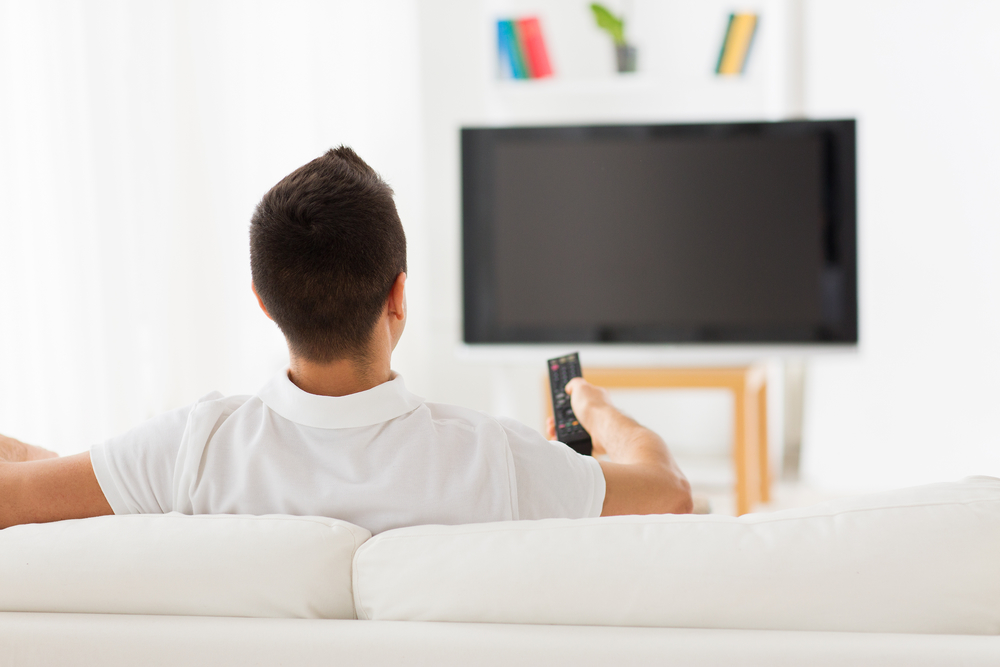Guide to Watching & Listening to TV with Hearing Aids
Dealing with hearing loss while watching TV can be difficult to navigate. Simply turning up the volume on the TV isn’t always a great solution for two reasons. One, turning the volume up higher can actually alter the quality of the sound clarity still making it difficult to understand depending on the speaker system. Two, the sound may be too loud for those around you who are also watching television.
TV Headphones
If you don’t wear a hearing aid, the most common assisted Listening Devices (ALD) are TV Headphones. The devices have a transmitter that connects to the TV’s output jack and the headphones are worn as normal by the listener. Controls on the headphones enable to user to adjust the volume and tone as they see fit. Often, one transmission base connected to the TV can send signals to multiple headphones.
Hearing Aids and Television
 If you already wear a hearing aid, your television experience may have already drastically improved. By wearing your hearing aids and directing your attention to your television, you may discover you can understand the dialog a lot better than before you had your hearing aids. Most hearing aids reduce background noise and amplify the sounds right in front of you.
If you already wear a hearing aid, your television experience may have already drastically improved. By wearing your hearing aids and directing your attention to your television, you may discover you can understand the dialog a lot better than before you had your hearing aids. Most hearing aids reduce background noise and amplify the sounds right in front of you.
However, you can improve your experience even more; ask your hearing health professional if your hearing aid has a program specifically for television watching. They will show you how to switch back and forth between the television program and the normal program when you are done.
Wireless Streaming TV to Hearing Aids
Sometimes your hearing aid alone is not enough to give you the volume you want from your television, especially if a lot of background noise is going on while you watch. A lot of up to date hearing aids are often equipped with a telecoil or other wireless capabilities that can be used for streaming the audio signal from your television directly to your hearing aids. In addition to bypassing environmental noises, signals that stream to your hearing aids are filtered through settings that are personalized for your hearing loss.
There are a couple of ways to wirelessly stream TV to your hearing aid: Induction Loops and Bluetooth.
Induction Loops
An induction loop sets up a magnetic field that is picked up by the telecoil in your hearing aid. The system connects to the audio through the headphone jack on your television or with a small microphone placed near the speaker of your television. The sound signal is transmitted to an amplifier loop that can run around the perimeter of a room or just a small personal loop worn around the neck of the user. When you want to listen to television, you turn on and wear the induction loop, then switch your hearing aids to the telecoil setting. Many public buildings, churches, and theaters have this type of system to ensure accessibility for hearing aid wearers since induction loop technology is very easily accessed by anyone with a telecoil in one or both hearing aids.
Bluetooth Systems
Hearing aids can also connect to TVs and devices wirelessly through Bluetooth connections. They can connect directly to some types of hearing aids or through an intermediary device. Intermediary streaming devices receive the Bluetooth signal and then send it to the hearing aids via another wireless connection. The intermediary device typically functions as a remote control as well, allowing you to adjust volume and change programs with the same tool.
Bluetooth technology is rising especially with the rise of wearable tech. Bluetooth is being introduced in hearing aids and televisions. However, Bluetooth is not a standard feature of either hearing aids or televisions, so make sure you ask your hearing health professional which transmitters or streamers can be used with your hearing aids. Once the hearing aids are paired with the desired devices, you can usually switch to wireless streaming with a single press of a button.
Enjoying television should be accessible to everyone and it is all very simple to set up for the comfort of you and your loved ones. If you have questions about the capabilities of your hearing aid to connect to your TV or questions about hearing loss, we are here to help! Please contact us today and schedule an appointment at one of our convenient Ohio hearing center locations: Bowling Green, Toledo, or Wauseon. The experts at Kenwood Hearing Center are here for you to help you with not only hearing loss but your overall hearing health.